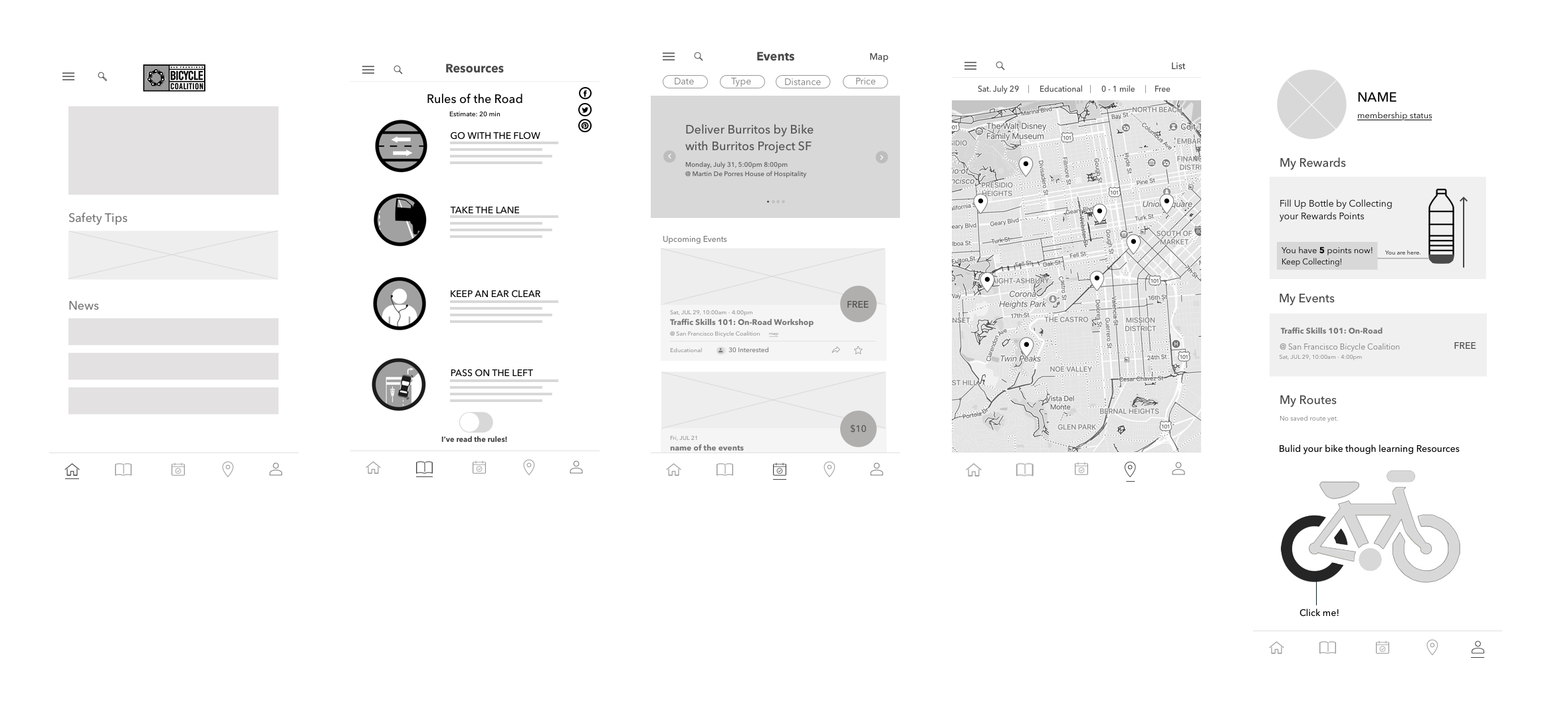
SFBC
Being the oldest bicycle advocacy group in San Francisco, we found a way to increase ridership across the city and help the San Francisco Bicycle Coalition become the trusted, go-to resource with this conceptual project.

Decreasing Rider Anxiety
Building confidence through education and community
The Problem
The San Francisco Bicycle Coalition (SFBC) is struggling to increase ridership across the city and to establish itself as the bicycle community’s trusted resource. Issues we identified included: intersection improvements, bike traffic lights, and creating and managing protected bike lanes. We discovered new riders experience anxiety, because whether you are new to navigating San Francisco or new to cycling altogether, it can be a scary adventure. For the more experienced riders, our focus was more about increasing cyclist and driver education.
““Riding my bike in San Francisco is scary!””
Our Solution
We designed an engaging way to reduce new rider anxiety with interactive educational resources, community events, and a rewards-driven system that’s easily accessible via a mobile application.
Brainstorm & Research
After some feedback on our concept map, we shifted focus from the maps on our app to the resource and events sections. We drew inspiration for our features from existing mobile apps like FitBit, Yelp, and Cute Animal Puzzles.

Competitive Analysis
We started the research process by looking at bicycle coalitions from other major metropolitan areas and a couple of smaller cities that have a robust biking community. We found that the SFBC is actually ahead of the curve as far as being a huge wealth of information for the community.
Surveys and Interviews
We surveyed 24 people and interviewed 4 others to get a better understanding of what it is like to be a bicyclist in San Francisco. Both new and experienced riders were included. The questions for both surveys and interviews were created to better understand how the resources the SFBC already offers can be of help.
Synthesizing the results from the survey and interviews showed that riders care about education for new riders and drivers alike. There are fears for road hazards and safety concerns that cause a high level of anxiety for newer riders. Interestingly, we also discovered the SFBC is more known in the bike community as a political advocacy group than as an event host or a repository of educational resources.
Our data helped us realize that the newer rider should be the primary user rather than the experienced rider as we originally thought. We were then able to create a persona of a new rider (in addition to one for an experienced rider).

Key Takeaways & Insights
We developed a concept map using the personas and empathy maps from our research. That helped uncover what content for our app would be the most important to "Jenny," our primary persona. While we kept the same main concepts from the SFBC website, like an events page and resources, we were able to add new features like having a profile, building out the maps section, and personalizing the experience for both. We listed features we thought the app should include and, using our sketchbooks, held a design studio session to quickly design some of these concepts and to have a discussion.
Design & Prototype
Design Solution to Instill Confidence
A major feature in our design was to build an interactive way for the user to learn from their resources. With the completion of each resource activity, you would earn a piece to build your bicycle puzzle and gain rewards points.
User Flow

Wireframes
We created a rewards system where users would earn rewards points by checking into events via Facebook and completing the interactive resource activities. On the profile page, users can track their rewards points with a water bottle that fills up as you accrue them. Cashing in their rewards points will earn users SFBC merchandise or money off their membership (whether they are a new member or wanting to upgrade their membership). The interactive resource guide and bicycle events will help reduce rider anxiety and gain confidence.


Resources

Event Details

Map Details
Hi-Fidelity Mocks

Next Steps
We received a lot of feedback regarding the secondary persona’s journey and how the app could help him (Benny), as well. Ways to engage these types of people could include providing the ability to track miles instead of building a bike with resources, building out the map section, and creating a simple form for riders to report road conditions/ hazards.